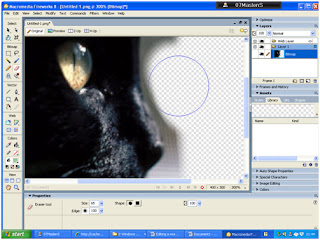This font is called Shlop. The way the individual letters drip, it looks like blood. This would be good for our logo because it shows conventions of horror. I think it would be good to keep the font colour black because if it was red it may be too explicit for a youger audience to see on advertisement. This font although would work well for our logo it may be too gorey because we wanted a clear significance between horror films and normal ones, so we probably need a font that is more neutral or a little less 'horror'.
This font is called Groovy Ghosties. This type of font would be completely wrong for our logo because it is too cartoon like and is very hard to read. This would also be wrong because it relates too much to horror/ghosts where as we need a font that can be used for normal films and horror. This type of font would not appeal to all audiences so wouldnt work because we want something that can been seen by all ages and that will appeal to all.
This font is called Grotesque. This type of font has thin letters that have spikes around them. This would not be right for our logo because we need it to be bold and easy to see and read, this font doesnt really show this so wouldnt be right. The font is quite boring and plain, which isnt what we want our logo to look like, we want it to be interesting and different to catch the viewers eye so they remember who our company are.
This font is called 'No Fear'. This font is exactly what we want for our logo because it is in with the theme, it is bold and easy to read. We like the way it looks like the letters have been smudged on using a finger, which adds to the effect of horror and creates tension because it looks scary. The way some of the letters have thin ends suggests it might be sharp. We also like the way it looks slightly messy because it adds to the idea of it looking like someone has done it themself. We would make the font colour red when using our logo in horror films because it gives an effect for the audience to know when it is a horror film instead of our normal films where we would keep the font colour black. This would be like how Lionsgate make their logo background red when presenting a horror film instead of a normal one. This will be our chosen font type because it fits well with our ideas on how we want our logo to look and will appeal to all viewers which means we will have a wider audience to present to.
This font is called Groovy Ghosties. This type of font would be completely wrong for our logo because it is too cartoon like and is very hard to read. This would also be wrong because it relates too much to horror/ghosts where as we need a font that can be used for normal films and horror. This type of font would not appeal to all audiences so wouldnt work because we want something that can been seen by all ages and that will appeal to all.
This font is called Grotesque. This type of font has thin letters that have spikes around them. This would not be right for our logo because we need it to be bold and easy to see and read, this font doesnt really show this so wouldnt be right. The font is quite boring and plain, which isnt what we want our logo to look like, we want it to be interesting and different to catch the viewers eye so they remember who our company are.
This font is called 'No Fear'. This font is exactly what we want for our logo because it is in with the theme, it is bold and easy to read. We like the way it looks like the letters have been smudged on using a finger, which adds to the effect of horror and creates tension because it looks scary. The way some of the letters have thin ends suggests it might be sharp. We also like the way it looks slightly messy because it adds to the idea of it looking like someone has done it themself. We would make the font colour red when using our logo in horror films because it gives an effect for the audience to know when it is a horror film instead of our normal films where we would keep the font colour black. This would be like how Lionsgate make their logo background red when presenting a horror film instead of a normal one. This will be our chosen font type because it fits well with our ideas on how we want our logo to look and will appeal to all viewers which means we will have a wider audience to present to.

































